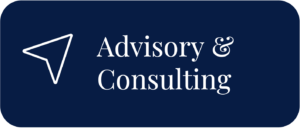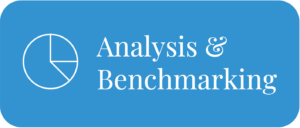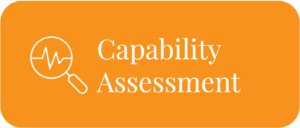Procurement is a critical strategic function that significantly impacts an organisation’s bottom line and operational efficiency. Leaders increasingly recognise the adoption of procurement maturity models as essential. These models offer a method to evaluate the effectiveness of an organisation’s procurement activities, covering aspects such as process efficiency, digitalisation, supplier management, and strategic alignment. To understand procurement maturity, a procurement maturity assessment is required.
1. Introduction
From Transactional to Strategic
A procurement maturity model assesses an organisation’s procurement processes across defined stages, facilitating its evolution from a basic transactional role to a strategic business element that drives value and innovation. For Chief Procurement Officers (CPOs) and Chief Financial Officers (CFOs), applying a procurement maturity model is about understanding the current state of procurement and planning a strategic direction. This involves envisioning the future state of procurement and identifying steps to achieve this vision, which is crucial for aligning procurement with broader business goals and the overall competitive strategy.
The Cost of Inaction
1. Understanding the Financial Impacts
A well-conducted procurement maturity assessment not only identifies cost-saving opportunities but also helps in averting financial losses linked to inefficient procurement practices, compliance issues, or missed strategic opportunities. Ignoring the need for such an assessment can result in substantial financial drawbacks over time, including overspending, poor contract management, and missed discounts or incentives.
2. Risk Mitigation
By pinpointing vulnerabilities within procurement processes and supplier relationships, maturity assessments are a proactive measure to mitigate risks before they escalate into serious issues. The cost of not conducting an assessment includes increased exposure to operational, financial, and reputational risks.
3. Competitive Disadvantage
Failing to assess and improve procurement maturity can leave organisations lagging behind their competitors. This inaction may lead to slower response times to market changes, less favourable terms from suppliers, and a diminished market position.
This strategic approach sets the stage for a deeper dive into the essence and structure of procurement maturity models, the very frameworks that guide organisations through this transformation.
2. Understanding Procurement Maturity Models
Procurement maturity models are strategic tools designed to evolve procurement from basic, cost-centric tasks to advanced, value-driven operations. These frameworks evaluate a procurement department’s current performance and outline a path towards peak efficiency. Key elements of these models include the sophistication of procurement processes, technological adoption, organisational structure, and alignment with overall business strategies.
The journey through a procurement maturity model typically progresses through various stages:
- Basic: This stage is characterised by reactive purchasing to meet immediate needs, with a heavy reliance on manual processes and a focus on minimising upfront costs. Strategic planning is minimal or absent.
- Developing: Organisations begin to appreciate structured procurement processes and initiate compliance policies at this level. There’s a budding interest in strategic sourcing, aiming to transcend simple transactional purchases.
- Defined: Procurement processes are established and consistently executed, with a strategic view that considers the total cost of ownership (TCO). Supplier relationships are more thoughtfully managed, and procurement decisions are informed by performance metrics.
- Integrated: Procurement is fully aligned with other business areas and recognised as a strategic asset. The use of technology for data analytics and process automation is standard, facilitating more sophisticated strategic activities.
- Leading: At the pinnacle, organisations leverage advanced analytics and maintain strong, collaborative supplier partnerships. Procurement is critical in shaping business strategies, fostering innovation, and ensuring a competitive edge in the market.
These stages represent a pathway for organisations to transform their procurement functions into strategic, value-adding business components, aligning purchasing activities with long-term objectives and market dynamics.
The path to achieving best-in-class procurement is a strategic endeavour requiring systematic procurement capability improvements.
The process begins with a comprehensive evaluation of the current state of procurement operations, focusing on their efficiency, effectiveness, and how well they align with organisational objectives. This assessment establishes a baseline for planning future development.
Advancing through the maturity stages involves a transformative shift in procurement practices. Initially, the priority is on establishing basic processes and controls to manage costs and ensure efficient transactions. As maturity grows, the focus shifts towards strategic sourcing, leveraging market knowledge and supplier relationships to drive competitive advantage.
As organisations climb the maturity ladder, technology plays an increasingly pivotal role. Automating routine tasks, adopting e-procurement solutions, and utilising advanced analytics for improved decision-making become key features of mature procurement functions. Technological integration enables a more strategic approach to managing supplier relationships, mitigating risks, and generating value.
In higher maturity stages, procurement becomes integral to strategic discussions, contributing to product development, market strategy, and merger and acquisition decisions with its insights and expertise. It evolves into a vital business partner, identifying and leading sustainable growth and innovation initiatives.
The journey toward procurement excellence is ongoing and requires regular evaluation and alignment with business goals. By progressing through procurement maturity models, organisations can achieve cost efficiencies and transform procurement into a strategic force that delivers lasting value.
3. The ‘Why’ Behind Procurement Maturity Models
The adoption of procurement maturity models is a critical step for organisations aiming to align their purchasing strategies with broader business objectives, ensuring that every procurement decision supports the company’s vision and growth targets.
Strategic alignment with business goals is paramount for CPOs and CFOs, as procurement directly impacts an organisation’s ability to innovate, respond to market changes, and achieve financial targets. A mature procurement function operates in sync with the company’s strategic plan, contributing to achieving key performance indicators such as market share expansion, revenue growth, and profitability. By following a maturity model, organisations can systematically improve their procurement activities, ensuring that they are both efficient and strategically oriented.
The role of procurement extends beyond just negotiating lower prices.
It encompasses value creation through the development of strong supplier relationships, the pursuit of quality improvements, and the fostering of innovation. Mature procurement practices enable organisations to leverage the capabilities and expertise of their suppliers, leading to the co-creation of value and potentially opening up new markets or product lines. This collaborative approach to procurement can result in a more responsive supply chain and a robust set of offerings that differentiate a company from its competitors.
Moreover, effective risk management and compliance are crucial in an environment where businesses are subject to an array of global regulations. A mature procurement function is characterised by its ability to navigate this complexity, ensuring that all purchasing activities adhere to relevant laws and ethical standards. The model helps organisations to anticipate and mitigate risks associated with supplier reliability, contractual obligations, and regulatory compliance. By integrating risk management practices into procurement, companies can protect themselves against supply chain disruptions, reputational damage, and potential legal penalties.
4. Business Case for Assessing Procurement Maturity
Assessing procurement maturity goes beyond compliance or ticking boxes; it’s a strategic initiative that benefits organisations committed to its thorough implementation.
Core Advantages of Procurement Maturity Assessments:
1. Identification of Process Gaps: Conducting a detailed procurement maturity assessment reveals inefficiencies and gaps within an organisation’s procurement operations. It enables leaders to identify areas for improvement across strategic sourcing, contract management, supplier relationship management, and spend analysis. Recognising these gaps is crucial for developing a tailored improvement plan and avoiding costly mistakes.
2. Benchmarking Against Industry Standards: Maturity models allow organisations to measure their procurement capabilities against industry benchmarks and best practices. This benchmarking offers valuable perspective on an organisation’s position relative to its peers, motivating procurement teams towards excellence and setting clear performance goals.
3. Driving Continuous Improvement: Insights from procurement maturity assessments encourage ongoing refinement of procurement strategies and the adoption of best practices. This can lead to more efficient and effective processes. For example, leveraging digital procurement tools enhances operational efficiency and provides actionable data insights, supporting better decision-making.
4. Innovation as a Standard: In organisations with advanced procurement functions, innovation becomes routine. Maturity assessments promote the exploration of new solutions, such as artificial intelligence, machine learning, and blockchain, to enhance procurement operations. This focus on innovation can lead to cost reductions, improved supplier partnerships, and increased value delivery.
5. Developing a Strategic Foothold: Achieving a high level of procurement maturity marks a transition from operational to strategic emphasis. Enhancing procurement maturity helps align procurement strategies with broader business goals, enabling procurement to support initiatives like market expansion, sustainability, and risk management.
6. Enhancing Organisational Agility: A mature procurement function equips an organisation to quickly adapt to market shifts, regulatory changes, and supply chain disruptions. This agility is crucial for maintaining business continuity and securing a competitive advantage.
By methodically assessing and improving procurement maturity, organisations optimise their purchasing capabilities and transform procurement into a strategic pillar—fuelling innovation, efficiency, and resilience. Solutions like Compara provide the necessary frameworks and analytics to drive informed decisions that advance procurement maturity.
5. Current State Assessment – The ‘As Is’
Evaluating Existing Procurement Processes
The journey towards procurement excellence begins with thoroughly evaluating existing procurement processes, known as the ‘As Is’ state. This foundational assessment is essential for future improvements, involving a comprehensive review of process efficiency, technology use, compliance with policies, supplier management, and team capabilities.
At this stage, organisations need to assess key aspects such as procurement cycle times, digital integration levels, the maturity of supplier relationships, and the strategic value procurement currently offers. Identifying weaknesses and strengths is crucial, as strengths provide a base for future enhancements.
The Importance of Understanding ‘As Is’
Recognising and measuring the current state serves several critical functions. It acts as a procurement maturity assessment tool to highlight inefficiencies, complexities, and risks and to pinpoint practices that might lead to legal issues. This understanding is crucial for informed decision-making by leadership, including the CPO and CFO.
Additionally, the ‘As Is’ assessment establishes a benchmark for progress. Without a clear understanding of the current state, setting realistic goals for the future state—or the ‘To Be’ where procurement is a strategic asset—becomes challenging. This benchmarking facilitates setting attainable improvement targets and monitoring progress towards these goals.
This initial assessment also plays a crucial role in gaining stakeholder buy-in. Documenting the current state can help overcome resistance to change by providing a persuasive case for the necessity and benefits of transformation.
With a comprehensive grasp of the ‘As Is’ state, organisations can confidently move towards the ‘To Be’ state. This transition is a deliberate transformation grounded in understanding the current state. It involves adopting best practices, technology solutions, and a shift in perspective from viewing procurement as a mere cost centre to recognising its strategic value.
Understanding the ‘As Is’ state clearly reflects the organisation’s current position, enables the visualisation of an optimised future, and lays the groundwork for a strategic overhaul of the procurement function.
6. Envisioning the Future – The ‘To Be’
The ‘To Be’ state represents the ideal future for an organisation’s procurement functions, where efficiency and strategic value are maximised. Achieving this vision requires understanding current challenges, industry trends, technological advancements, and market shifts.
In this future state, procurement transcends traditional roles to become a centre of innovation and strategic insight. This shift involves moving from cost-focus to value-orientation, with fully optimised processes, advanced technology integration, proactive risk management, and deep strategic supplier partnerships. Procurement’s role expands to influence company-wide strategic decisions and long-term objectives.
Setting Realistic and Measurable Goals
Transitioning to the ‘To Be’ state necessitates setting goals that are ambitious yet achievable, following the SMART criteria—Specific, Measurable, Achievable, Relevant, and Time-bound. These goals should align with the organisation’s wider objectives and aim for clear business impacts.
The foundation for goal setting is the insights from the ‘As Is’ assessment. For instance, if a gap in digital tool usage is identified, a goal might be to implement an e-procurement system within a specific timeframe, with benchmarks for adoption and process improvements. Similarly, enhancing supplier relationships could lead to establishing a partnership program to foster collaboration and innovation.
Goals should also focus on elevating the maturity level of procurement practices, aiming for a strategic procurement role or achieving a leading position in business innovation. Adaptability and scalability are crucial, allowing goals to evolve in response to global economic changes.
Measuring Progress Towards the Future State
The journey to the ‘To Be’ state requires ongoing measurement and refinement. Establishing Key Performance Indicators (KPIs)—such as cost savings, process efficiency, compliance rates, and value from supplier innovation—is essential for tracking progress. Regularly reviewing these KPIs enables the adjustment of goals and strategies to stay aligned with the evolving business landscape.
By clearly defining a ‘To Be’ vision backed by realistic, measurable goals, procurement can significantly enhance its contribution to an organisation’s competitive edge and success. CPOs and CEOs will find that a well-articulated ‘To Be’ state directs the procurement team and aligns procurement achievements with the company’s broader financial and strategic goals.
As we conclude the first part of our exploration into procurement maturity models, we’ve covered the journey towards best-in-class procurement, the strategic importance of such models, and how to assess the current state of your organisation’s procurement processes. We’ve established the business case and set the stage for a transformational vision. Stay tuned for Part 2 of “Future-Proofing Your Procurement: The Cost of Ignoring Maturity Models” -the next instalment, where we will dive into the development from procurement maturity assessments, the crucial steps for implementation and beyond, and how technology can accelerate procurement maturity to new heights.








